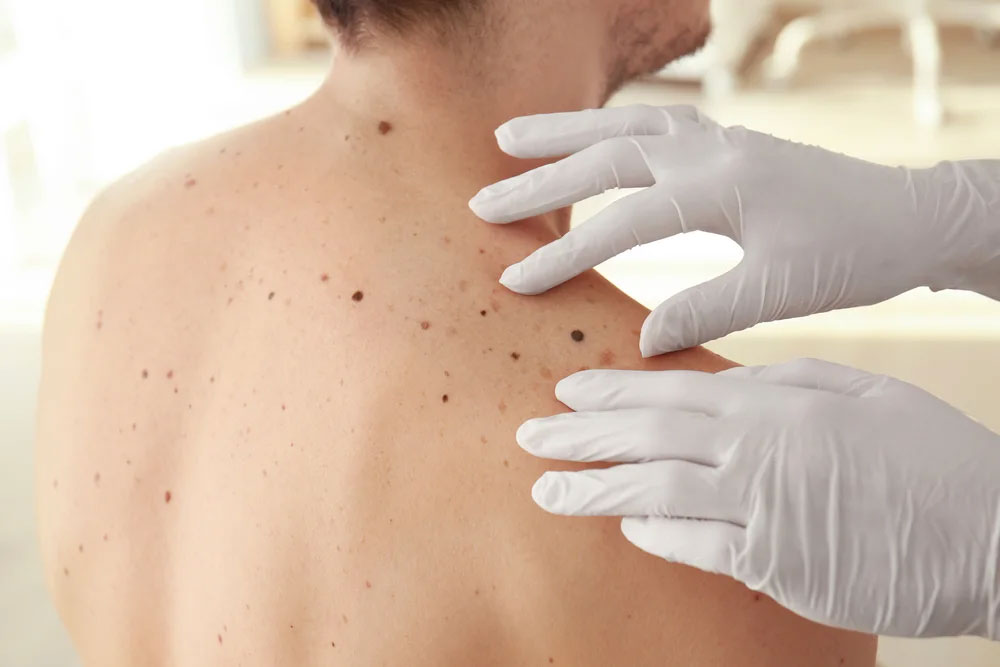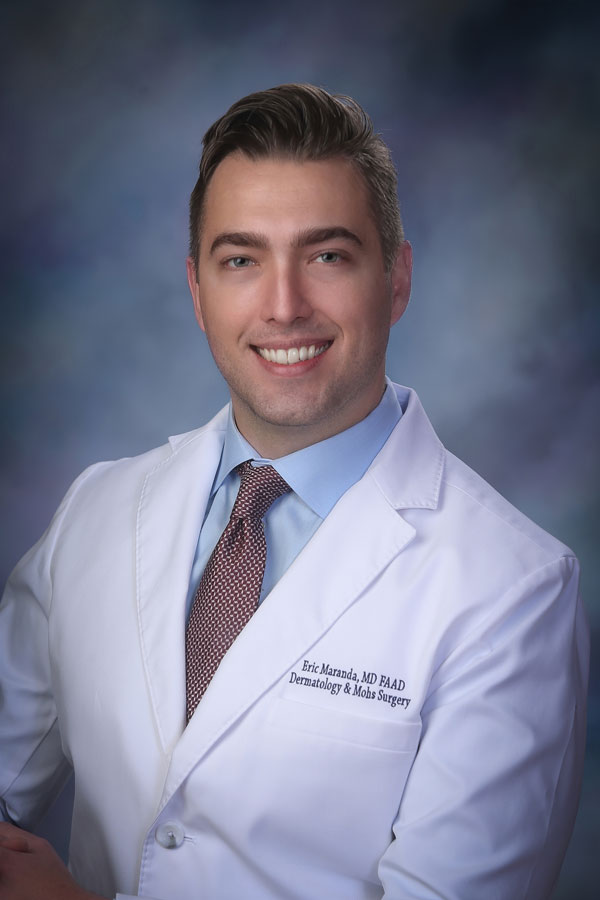
Skin cancer is the most common type of cancer in the United States, with one out of every five Americans developing a form of skin cancer by the age of 70. Early diagnosis and timely intervention is crucial for a good prognosis. Basal cell carcinoma, squamous cell carcinoma, and melanoma are the three most common types of skin cancer. Most non-melanoma skin malignancies are linked to sun’s radiation UV energy. As a result, the first line of defense against skin cancer is sun protection. Skin cancer is highly treatable if found early and treated correctly. The first step is to have your skin examined by a board-certified dermatologist. Any noticeable changes in the skin such as spots that have changed in size, shape, or color should be reported to your physician. Suspicious lesions are biopsied, and a pathologist determines the type of cells found in the sample, as well as whether cancer has been diagnosed. Among the treatments offered are traditional surgery, scraping and burning, freezing, radiation, topical medicines, and Mohs micrographic surgery.
To Schedule an Appointment
Call (406) 732-6974
Address:
178 S 32nd St W Suite 3
Billings, MT 59102
Email:
One in five people in the US will develop skin cancer which can affect anyone, regardless of skin color. Mohs surgery is highly tissue-sparing and performed in an outpatient setting. Once the cancer is removed, the tissue is immediately examined under the microscope. The doctor continues to remove tissue that are positive for the malignant cells until the site is cancer free.
Mohs surgery is the most effective technique in the treatment of skin cancer. Mohs surgery is performed by a surgeon with specialized training and offers the greatest cure rate of any skin cancer therapy.
During a Mohs surgery, a patient is awake and conscious during the process, which will take place in the clinic. The surgeon performing Mohs surgery will initially do a comprehensive evaluation of the area with the biopsy-proven skin cancer. The surgeon will then mark out the clinical edges of the malignancy. To ensure comfort during the procedure, the area will be numbed with local anesthetic.
The surgeon will begin by removing the apparent skin cancer. Following that, the patient will be bandaged and wait in the patient room while the surgeon evaluates the tissue in an in-house laboratory. During this process, the surgeon will examine the margins of the specimen under a microscope to see if all the malignancy has been removed.
If the cancer has completely been removed, the surgeon will discuss wound closure options with the patient. If the Mohs surgeon finds additional malignancy while looking in the microscope, the surgeon will take more skin that is positive for the skin cancer, while sparing the cancer-free skin. This procedure is repeated as needed to guarantee complete removal of the skin malignancy.
The recovery period for Mohs surgery is mostly determined on the size of the skin malignancy and its location. If the spread of skin cancer was minimal, the wound may be permitted to heal on its own for a short period of time. If sutures or a skin graft are required, some at-home care will be required for weeks until the wound heals completely.
Basal cell carcinoma (BCC) is the most common type of skin cancer. Because this is a slow-growing cancer that is generally localized, early discovery and treatment results in an exceedingly high cure rate and very good prognosis.
Squamous cell carcinoma (SCC) is a type of skin cancer that originates in the middle and outer layers of the skin as a result of chronic UV exposure. SCC is most likely to develop on the back of hands, face, neck, lips, and scalp, all of which are frequently exposed to sunlight.
Because of its susceptibility to spread to other areas of the body, melanoma is the most dangerous type of skin cancer. The melanocyte cell from which this cancer arises gives it its name. Treatments can result in a very low probability of relapse or metastasis if detected early. The stage of melanoma treatment is determined by the cancer’s progression. Surgical excisions or Mohs surgery can be useful in eliminating cells from the skin in the early stages. Your doctor may propose lymph node surgery, chemotherapy, or radiation therapy at a later time.
 About us
About usDr. Maranda and our dedicated staff will make sure you feel welcome and are always treated with the utmost respect, privacy, safety and compassionate care. Yellowstone Dermatology Associates provides individualized compassionate care to every patient. Our brand new dermatology facility led by board-certified dermatologist, Eric Maranda MD, FAAD offers Medical, Surgical Dermatology and Mohs surgical services. We treat a wide range of dermatological conditions including: skin cancer, acne, warts, eczema, rashes and psoriasis. Call us today to schedule an appointment.